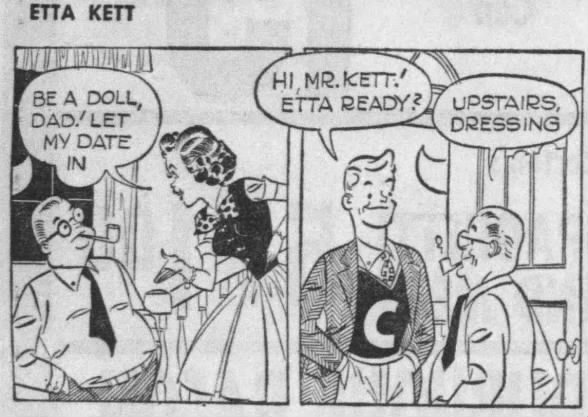 Chess Chats 15 Feb 1959, Sun The Press Democrat (Santa Rosa, California) Newspapers.com
Chess Chats 15 Feb 1959, Sun The Press Democrat (Santa Rosa, California) Newspapers.com
Chess Chats By George Koltanowski
International Chess Master
Problem No. 167
White to play and mate in two moves.
FEN 8/8/2Np2K1/2r2R2/R1P1kNp1/5p2/3P1P2/1bB1n3 w - - 0 1
Solution: 1. Rd5 Ng2 2. Rd4#
The Press Democrat Chess Chats by George Koltanowski, Sunday, February 15, 1959, Santa Rosa, California Problem No....
Posted by Bobby Fischer's True History on Sunday, March 13, 2022
WHAT IS A GRANDMASTER?
We have received many queries from our readers asking how a chess player gets the coveted life time title of International Chess-master or International Grandmaster. Most chessplayers are often in difficulties if asked for the exact qualifications necessary to win these titles so we thought that an article on this subject might be interesting and illuminating.
Firstly, a few general facts are in order. At the present time there are in the world approximately 50 living International Grandmasters and 150 International Chessmasters.
The FIDE (International Federation of Chess) has for a long time been guided by rules and directives in assigning the high titles we are discussing, but recently it was recognized that they were in some respects obsolete. In the last few years experience has shown that it was of prime importance to bring the many chess tournaments held in different countries into a classified relationship with one another.
Thereby it would not only be possible to establish the absolute value, of a chess tournament but also lay the foundation for the more precise conferment of the titles of International Grandmaster and Master.
Proposal Received
Before the 1955 Goteborg Congress, the FIDE had received a proposal by Messrs. Ferrantes, Alexander (well known English international player) and dal Verme. This report came to be known as the FAV report and contained regulations for the valuation of chess tournaments as well as for the conferment of international titles.
It must be noted that the committee faced a task which was anything but easy. It is evident that regulations for classification can never be founded on an ideal or purely mathematical basis, since the playing capacity of chess masters is not an exactly measurable force, apart from the indisputable fact, that it is subject to some variability from tournament to tournament.
FAV Classifications
However, the FAV committee has presented us with classification regulations which will, we feel, establish approximate valuations which are sufficient to attain the required objective (i.e. valuation of the strength of tournaments and achievements of chess masters).
The final FAV report was submitted to the 1956 FIDE meeting in Moscow and was substantially adopted by the 1957 FIDE Congress in Vienna. The main points of this are as follows:
The title of International Grand master shall be (Editor's note—Not “must be”) conferred on an International Master who:
(a) Once in an international chess tournament of Category 1 (a) or
(b) Twice within three years in a chess tournament of Category 1 (b) and/or II (a) has obtained a Grandmaster result.
Title Conferred
The title of International Grand master can be conferred upon an International Master, who
(a) Once in a chess tournament of Category II (a) or I (b) or
(b) Twice within three years m a tournament of Category II (b) has obtained a Grandmaster result.
In the rules there are a number of terms which need defining.
An international chess tournament is one in which at least 10 players of different nationalities participate provided that, with a number of participants not exceeding 12, the players of any one country do not exceed half of that number plus one. With the number of participants over 12, they do not exceed half of the number of players plus two.
(Concluded next week)
Played in the San Francisco Holiday Tournament, Dec. 14. Entered for the Kolty Trophy.
White: Eric Osbun, Santa Rosa. Black: D. Hardy, Orinda.
Unresolved Chess Game: Can you solve it?
(a) 5. P-B3 is also playable.
(b) Shows courage. Intends to attack on the King's side.
(c) The pressure becomes too much for Black. He now gets run over.
Chess Quote of the Day
He who attacks has the advantage. Labourdonais, 1850.

 Etta Kett 18 Feb 1959, Wed The Press Democrat (Santa Rosa, California) Newspapers.com
Etta Kett 18 Feb 1959, Wed The Press Democrat (Santa Rosa, California) Newspapers.com
 Seventeen 19 Feb 1959, Thu The Press Democrat (Santa Rosa, California) Newspapers.com
★
Seventeen 19 Feb 1959, Thu The Press Democrat (Santa Rosa, California) Newspapers.com
★























